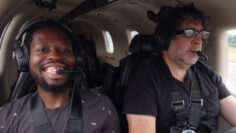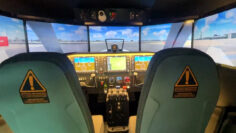What Is Air Traffic Control

Air voyages, a critical component of our interconnected world, are made possible by an intricate behind-the-scenes symphony conducted by the air traffic control system (ATC). This narrative aims to illuminate the complexities of ATC, demystifying its pivotal role in safeguarding and streamlining air transportation.
Unraveling the Air Traffic Control
At its essence, air traffic control (ATC) is an intricate network tasked with choreographing the dance of aircraft within designated sky sectors, safeguarding against collisions and orchestrating systematic traffic flow. This system operates through an amalgamation of methodologies, state-of-the-art technologies, and robust communication channels.

The Multifaceted Roles of Air Traffic Control
Safeguarding the Skies:
Ensuring air safety is paramount for ATC. Controllers constantly monitor aircraft, ensuring they maintain safe distances while granting clearance for departures, arrivals, and flight trajectories, all the while diligently maintaining separation between aircraft. In emergencies, they are the guiding voice helping pilots navigate through adverse weather or other impediments.
Orchestrating Aerial Movements:
In addition to safety, ATC also deftly manages the ballet of aircraft in the sky. They meticulously manage the number of planes within a specified airspace to mitigate overcrowding. By strategically planning departures and arrivals and factoring in elements such as flight routes, aircraft performance, and congested airports, they ensure smooth traffic flow and punctual travel.
The Weather Watchers:
ATC assumes an indispensable role in supplying pilots with timely weather updates. Controllers monitor weather changes and inform pilots about imminent storms, fog, or gusty winds, enabling them to make safe, informed decisions regarding flight routes and altitudes. This proactive approach mitigates flight disruptions and bolsters safety.
Behind the Scenes with Air Traffic Controllers
Training and Certification:
Air traffic controllers undergo rigorous training to master their craft. Specialized courses encompass aviation regulations, communication protocols, navigation systems, and emergency response tactics. Simulations and on-the-job experiences are incorporated to sharpen their problem-solving and decision-making abilities.
Command and Judgment:
Air traffic controllers shoulder immense responsibility. They oversee multiple aircraft concurrently, ensuring each adheres to its stipulated route and maintains safe distances from others. Their job demands sharp decision-making skills and composure under pressure, ensuring the safe and efficient movement of aircraft.
Teamwork and Communication:
In the realm of air traffic control, effective communication is crucial. Controllers converse with pilots, issue instructions, and exchange vital information using sophisticated radios and other communication tools. Additionally, they collaborate seamlessly with different ATC units, facilitating smooth aircraft transition across different airspace sectors.
The Technological Backbone of Air Traffic Control
Radar Capabilities:
Radar is an integral technology used in ATC. It enables controllers to monitor aircraft locations and velocities in real-time. Primary radar dispatches radio waves that reflect off aircraft, providing instant location updates. Secondary radar, or SSR (Secondary Surveillance Radar), leverages aircraft transponders to obtain additional information such as the plane’s identification and altitude.
Automated Dependent Surveillance-Broadcast (ADS-B):
ADS-B, a state-of-the-art technology, significantly enhances ATC capabilities. Equipped with ADS-B transmitters, aircraft transmit their location, velocity, and other essential data via satellites or ground-based receivers, allowing for precise tracking and improved routing efficiency.
Communication Systems:
Effective communication is the lifeline of ATC. VHF (Very High Frequency) radio is typically used for dialogues between controllers and pilots. Moreover, data link technology like CPDLC (Controller-Pilot Data Link Communications) enables text-based communication for non-emergency exchanges, alleviating radio congestion and ensuring seamless coordination.

Demystifying Common Queries about Air Traffic Control
How does Air Traffic Control manage emergencies?
Emergency scenarios trigger specific procedures in ATC. When pilots report emergencies, controllers provide essential guidance and support, potentially rerouting the aircraft to suitable airports, securing airspace, and liaising with emergency services. Swift and safe response to emergencies is coordinated in collaboration with other ATC units and emergency teams.
How does ATC cope with peak travel periods?
During high-traffic periods like holidays or peak seasons, ATC faces a surge in sky traffic. Strategic planning and coordination are employed to manage this increased load. Controllers might use specific programs to regulate the aircraft flow, preventing congestion in crowded areas or at busy airports. Certain flights might be prioritized based on urgency or operational considerations.
How does ATC manage international flights?
The management of international flights necessitates cooperation between ATC units across different countries. Controllers exchange information regarding flight plans, trajectories, and estimated arrival times. Control of aircraft is seamlessly transitioned as they traverse different national airspaces. This coordination ensures uninterrupted communication and efficient international air travel.
Final Thoughts
Air traffic control serves as the invisible orchestrator of the skies, vital for secure and streamlined air travel. By adeptly managing air traffic, offering timely weather updates, and facilitating clear communication, ATC ensures the safe and efficient transit of aircraft. Advancements in radar systems, ADS-B technology, and improved communication systems continually augment the capabilities of ATC.
Air traffic controllers, the unsung heroes of the aviation industry, deserve our appreciation for their relentless work behind the scenes, ensuring our journeys are both punctual and safe. Their commitment, proficiency, and expert decision-making skills are invaluable assets to aviation.
Engage With Us:
- Share Your Insights: We invite you to share your thoughts and experiences with ATC in the comments below.
- Ask Away: If you have any queries about air traffic control, drop a comment, and we’ll be glad to assist.
- Spread the Word: If you found this article enlightening, do share it with your friends and fellow aviation aficionados.
- Check Out Our Recent Article on “Who Is an Aviation Psychologist?”: Broaden your understanding of the aviation industry with our latest piece delving into the intriguing discipline of aviation psychology.






